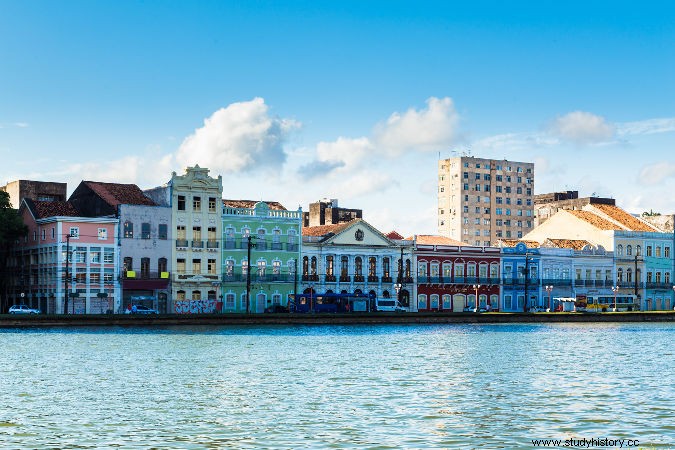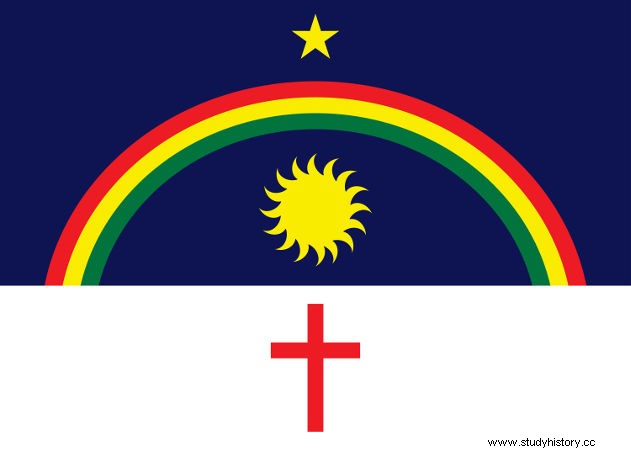
The Pernambucan Revolution of 1817 it was a separatist movement – the last one that took place in the colonial period – of a republican character that took place in the Captaincy of Pernambuco. This movement was led by the local elites, but it had great popular support as soon as it started. This revolt had as a direct cause the changes caused in this region because of the transfer of the Portuguese Court to Brazil in 1808.
Causes of the Pernambuco Revolution
The Pernambuco Revolution of 1817, as well as the Inconfidência Mineira and the Baiana Conjuration, was a separatist and republican movement that took place in colonial Brazil. The big difference between this movement and the other two mentioned was that the Pernambuco Revolution managed to overcome the conspiratorial phase and came to seize local power for more than two months.
This movement was motivated by popular dissatisfaction with the terrible living conditions that existed at that time and, mainly, by the dissatisfaction of local elites, whose interests conflicted with those of the Portuguese Crown. This tension was amplified with the dissemination of Enlightenment ideals in this region.
The Pernambuco Revolution was directly related to the arrival of the Portuguese Court to Brazil in 1808. With this event, the life of the settlers in Pernambuco changed in many ways. First, there was an increase in taxes in Pernambuco to maintain the luxuries of the Court and to finance the military campaigns promoted in the south (Cisplatina).
This policy of the Court was manifested in the taxes imposed on the production of local cotton. In addition, the population of Recife was charged a tax on public lighting in the city of Rio de Janeiro. This increase in the tax burden generated great discontent, mainly because the local economy was in crisis due to the reduction in the production of sugar and cotton – main products of the local economy.
In addition, D. João VI appointed several Portuguese, who had moved to Brazil with him in 1808, to important administrative positions in Pernambuco and also to positions in the army. This also displeased the local elites, who were harmed by these actions in favor of the Portuguese.
The existence of great social inequality was also important, as the dissatisfaction caused helped to mobilize the popular strata. Finally, the diffusion of Enlightenment ideals, which gave the movement an ideological basis, was provided by a Masonic lodge, the Areópago de Itambé , and by Olinda Seminary .
The movement had the local elites, made up of large merchants and some large landowners, and was also joined by the military, judges, small merchants, artisans and many priests. The great adhesion of priests to the movement, in fact, made this rebellion also known as the Revolution of the Fathers .
In addition, the Pernambuco region had a long history of rebellions, such as the Pernambucana Insurrection and the War of the Mascates . At the beginning of the 19th century, local dissatisfaction motivated yet another movement against the Crown, known as the Conspiracy of Suassunas , however, after being denounced, it was dismantled in 1801.
Beginning of the Pernambuco Revolution
The Pernambuco Revolution actually began on March 6, 1817, when Portuguese Brigadier Manoel Joaquim Barbosa de Castro was assassinated when carrying out the local governor's order to arrest those suspected of being involved in a conspiracy. This murder was committed by Captain José de Barros Lima, who reacted to the arrest made by the Brigadier.
This rebellion then spread throughout the city of Recife, which forced the local governor to take shelter in the Forte do Brum. Soon after, that same governor, Caetano Pinto de Miranda Montenegro, fled to the capital Rio de Janeiro. The rebels, victorious, implanted a Provisional Government which decreed several changes in Pernambuco.

The current flag of the State of Pernambuco is based on the flag created during the Pernambuco Revolution
The Pernambuco Revolution had the following names as leaders:Domingos José Martins , José de Barros Lima , Cabugá Cross , Father João Ribeiro , between others. Once the Provisional Government was formulated, some measures were taken, such as:
-
Proclamation of the Republic in the Captaincy of Pernambuco;
-
Established freedom of the press and the freedom of belief;
-
The taxes created by D. João VI were abolished;
-
Institution of the principle of the three powers (executive, legislative and judiciary);
-
Soldier pay increase;
-
Maintenance of slave labor.
Despite being a liberal movement, the measures taken by the Provisional Government aimed to benefit the local elites much more than necessarily promoting the creation of a just and egalitarian society. The maintenance of slave labor was evidence of this, since in this movement there was the participation of large landowners who were against abolition.
The Pernambuco Revolution spread to neighboring captaincies and reached Paraíba, Rio Grande do Norte and Ceará. The movement's leaders sent emissaries to different captaincies in search of support, as well as to neighboring countries. Cruz Cabugá, for example, was sent to the United States with US$800,000 to buy weapons, hire soldiers and get the US government's support for the Pernambuco movement.
Crown Repression
The Pernambuco Revolution was intensely repressed by the Portuguese Crown. As soon as news of the rebellion reached Rio de Janeiro, King João VI mobilized a fleet that was taken from Rio de Janeiro to blockade the port of Recife. In addition, more than four thousand soldiers were sent from Bahia and marched to Pernambuco.
The movement was weakened by internal differences between the leaders, which allowed the royal troops to regain control over Paraíba, Rio Grande do Norte and Ceará. In Pernambuco, the revolt lasted until May 20, 1817, when the leaders surrendered to General Luís do Rego Barreto after the city of Recife was invaded.
By order of D. João VI, the leaders of the movement had exemplary punishments. In all, nine people were hanged and another four were arquebused – the corresponding at the time for firing squad. One of those involved, Father João Ribeiro, hanged himself shortly before being captured, and Cruz Cabugá, receiving news of the movement's failure, did not return to Brazil and remained in the United States.
The great leader of the Pernambuco uprising, Domingo José Martins, was arquebused, and other leaders suffered severe martyrdom. Captain José de Barros Lima, for example, was hanged and had his hands and head cut off and placed on display, and his body was dragged through the streets of Recife. The same happened with the bodies of Father João Ribeiro and Vigário Tenório. Others involved remained in prison for years.
Take the opportunity to check out our video lesson on the subject:
